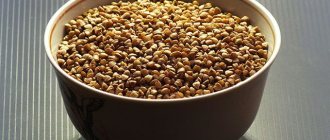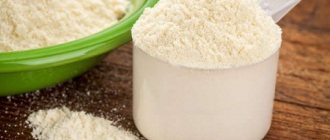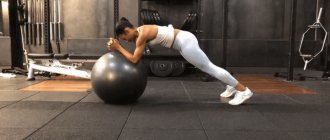It doesn’t matter whether you have just started playing sports or have been actively training for a long time. Either way, you probably want to evaluate your fitness level.
Is it really necessary to go to the laboratory and undergo a gas analyzer test in order to compare your results with the results of sports champions? This is quite expensive, many cities do not have such an opportunity, and there is no need for such complex calculations.
We have good news: to determine your level of preparation, you will only need 12 minutes of free time, a stopwatch and a drive for success!
Anyone who has performed the Cooper test can assess the state of their cardiovascular, respiratory, and musculoskeletal systems. In addition, the test allows you to calculate your MOC level - the most important aerobic indicator.
Let's learn more about this effective + affordable test!
History of the Cooper test
Initially, the Cooper endurance test was not intended for athletes at all.
American doctor, scientist, US Air Force Colonel Kenneth H. Cooper developed it to assess the military’s readiness for high-intensity loads. Hence the name of the test after the name of the creator - the Cooper test.
1968 was a real breakthrough for sports medicine. Dr. Cooper has developed more than 30 different assessment tests.
The scientist found out that it takes exactly 12 minutes for a person to use up oxygen, begin to experience oxygen starvation, but not cause harm to the body. This means that in this way you can determine aerobic endurance, the maximum value of VO2. These metrics help us evaluate running economy—how efficiently oxygen is used during exercise.
The test was useful not only to the military. It immediately reached many target audiences due to its simplicity and accessibility.
Story
Kenneth Cooper is a medical doctor and former Air Force colonel from Oklahoma. While serving in the military, he developed a simple test that could quickly determine the fitness level of a large number of athletes.
Dr. Cooper found that there is a very high correlation between the distance a person can run (or walk) in 12 minutes and their VO2MAX. The results were published in the Journal of the American Medical Association in 1968, and the test is still used around the world.
Even 50 years later, Cooper vouches for the importance of the test. Research from his institute has shown that middle-aged men and women who score well on the test have a lower likelihood of heart disease and other chronic diseases later in life.
Who is the Cooper test suitable for?
The Cooper aerobic test is used not only for calculating MPC by professional athletes or passing standards in military structures. It allows:
- Assess the physical level of development of beginners in order to draw up a competent training plan. However, you can do it not “from the couch,” but after 2-3 months of light exercise, which strengthens the cardiovascular and respiratory systems. Minimal preparation is needed for the body to adapt;
- Track your progress and detect overtraining in time. The Cooper test is not recommended to be done more than once a month, otherwise you can overload the body. Keep a notebook where you will write down your results every month and track your progress. When suddenly, against the background of general progress, you notice a deterioration in the indicator, think about the possible overtraining of the body;
- Sports coaches of football, basketball, and hockey teams use the Cooper test to assess each player’s readiness for competition and form a strong team;
- Some athletes use the Cooper test as a conclusion to individual workouts.
The Cooper test for girls is performed according to the same rules as for men. Only the standards differ.
Download training plans to prepare for the marathon and half marathon.
Start preparing right now!
About hockey and again about the Cooper test
About hockey and again about the Cooper test
(Modification of the Cooper test for assessing aerobic performance in team sports)
Popov V.P. Candidate of Pedagogical Sciences, Associate Professor of the Belarusian University of Physical Culture and Sports, Zankovets V.E., physical training coach of the Dynamo Minsk hockey team
The preparation of an athlete is one of the forms of the management process, the most important attribute of which is the so-called feedback, called testing in sports.
It is impossible not to notice that for many years the Cooper test in various modifications has been present in testing programs for hockey players, football players and even judges. Let us recall that the Cooper test (1968) was created to determine physical performance and gained worldwide popularity among the population due to its accessibility and high degree of correlation with the IPC, the laboratory test PWC 170. The undoubted advantage of the test is the global nature of the load, i.e. More than 2/3 of the muscle mass is included in the work. The work performed (load) of the test places high demands not only on the muscular system, but also on the systems that ensure muscle activity, primarily cardiovascular and respiratory. This allows us to indirectly assess their functional state.
It should be noted that the test was not created for highly qualified athletes and professionals. Its massive and uncritical implementation in all types of active motor activity with subsequent conclusions based on testing results that go beyond its competence is alarming. The most significant thing is the massive rejection of this test by professional athletes. It is enough to type two cherished words on the Internet to be convinced of this: “The test was like an execution,” “Everyone was waiting for the test with fear, after this test the rest of the exercises seem like a cakewalk,” in 2004. 17-year-old football player Andrei Pavitsky from Arsenal Kyiv did not make it and died.
Based on the results of a survey of domestic coaches, as well as from the experience of our observations, we can conclude that in almost all professional clubs at the stage of pre-season training, the Cooper test is used in different versions as an assessment of current readiness. Many coaches generally consider it the main test, and in some clubs it is the only test at the preparatory stage!
As you can see, there is definitely a problem! Without questioning the need to test the general endurance of athletes, let us ask ourselves what are the reasons for professional athletes’ rejection of this form of testing, and also consider the degree of informativeness, objectivity and usefulness of the information received.
So, the question is: is there any reason to consider the Cooper test to be appropriate for the task of objectively assessing the level of performance in professional hockey?
The load imposed on the body during Cooper tests can be classified as “aerobic” - that is, performed primarily through the aerobic energy supply system.
Kenneth Cooper wrote that “In 12 minutes you can cover a considerable distance. Our research shows that this distance is proportional to your maximal maximal capacity. In other words, you can determine your BMD [very approximately - author's note] using a 12-minute test" [1].
Table 1 - Relationship between distance length and oxygen consumption[1]
| Distance in km | Oxygen consumption in ml/kg/min |
| Less than 1.6 | Less than 25.0 |
| 1,6 – 1,9 | 25,0 – 33,7 |
| 2,0 – 2,4 | 33,8 – 42,5 |
| 2,5 – 2,7 | 42,6 – 51,5 |
| 2.8 and more | 51.6 and more |
Analysis of competitive activity [9, 24, 25, 26, 27] showed that the game of an individual hockey player consists of 30-80 second intervals of intense game actions and 3-5 minute intervals of passive rest [9, 24, 28, 29] . During the match, the hockey player performs up to 55-65 accelerations at maximum and submaximal speeds of 10-30 m or more in length, makes 25-30 brakings, after which he starts at maximum speed, and participates in 20-25 power combats. Accelerations at maximum speed (total length per match, depending on the player’s role, 1200-1800 m) are also combined with lower-intensity running and coasting (5-6 km per match). During a match, a hockey player participates on average in 21-22 shifts of 40-45 seconds each, the game intensity in the heart rate zone is 180-190 beats/min and higher [9].
The ability to compensate for existing changes in the body during numerous rest breaks will certainly be determined by the aerobic capabilities of the athlete, which in practice is called general endurance. This point requires measurement and evaluation.
The next aspect that needs to be focused on is the test design. In sports practice, some coaches use the 3,000-meter run, calling this action the Cooper test. Some are convinced that this is not enough and use the 3,200 meter run. If we turn to the books of Kenneth Cooper, we will find two recommended types of testing: the 12-minute test and the one and a half mile (2414 m) test [1]. Cooper is not talking about any 3 km! Since the second option is practically never used, we will consider in detail only the first. Here the task is to run as far as possible in 12 minutes. After this time period has passed, the distance covered is measured. The result is compared with the table, after which a final assessment is given.
It is extremely interesting how many coaches of professional football and hockey teams interpreted this information. Having received Cooper's “blessing” that an excellent level of overall performance is guaranteed at a result of 2.8-3 km, they set this result as the passing norm in this test. Yes, we agree that part of the testing problem has been solved, but how can we understand at what cost this result was achieved by each athlete on the team, even if the entire team fulfilled this standard? How to get each player's rating for a given quality? How to monitor the dynamics of this indicator during preparation and competition? At the same time, there are questions about the norms themselves.
Cooper's standards are based on age. The original aerobics program was based solely on data obtained from experimental groups in the US Air Force, a 12-minute test chart designed for US Air Force personnel who averaged less than 30 years of age [1]. Subsequently, the norms extended to a wide range of students. It should be noted that the standards established by Cooper are based on the age standards of Swedish scientists [1]. Subsequently, the test was recommended to sports clubs. However, we did not find evidence that serious studies have been conducted on athletes and corresponding tables have been created for professional athletes. In addition, there is a problem of motivation. It is extremely difficult to motivate a hockey player with a signed contract to run at full strength in a pre-season test. It is naive to believe that everyone will certainly want to “squeeze” the maximum out of themselves. Players undergoing trial, whose fate is still being decided, will give their all. However, most players run for the required time to get an “excellent” result, but no more. This does not allow one to assess the existing aerobic capabilities, which significantly distorts the overall picture, confusing the coaching staff. With repeated testing, we will not be able to assess the level of progress and regression of the players, how effective the training program was, because the hockey players will again try to run only “excellent”.
All of the above suggests that modern hockey (and not only hockey) needs a more objective and practical test in complex testing of general physical fitness, which will allow: a) to eliminate the factor of motivation, b) to reduce the load during testing, which will allow many times during the preparation process teams to carry out control without overloading athletes with a maximum test; c) reduce the likelihood of overexertion and injury; d) allow for the most objective assessment of the physical performance of a hockey player; e) compare the preparedness of individual team athletes; monitor changes in aerobic abilities during the game season.
What can be proposed to overcome these shortcomings of the test? Obviously, one should turn to numerous works on the physiology and biochemistry of sports. It is known that the term aerobic performance is used in the physiology of muscle activity to denote the ability to perform high-intensity physical activity, the energy supply of which is carried out primarily aerobically. The problem of increasing aerobic performance is relevant for sports. Therefore, it is not surprising that the identification of new methods for diagnosing the aerobic capabilities of the body continues actively.
Limitation of aerobic performance has been associated with low rates of oxygen delivery to muscles (Saltin et al., 2006), insufficient diffusion capacity (Wagner et al., 2006) and oxidative potential of muscles (Hoppeler et al., 1998), and excessive accumulation of anaerobic glycolytic metabolites (Renaud et al., 1986). The oxygen delivery and utilization system is quite complex and includes several stages. It is not surprising that it is not possible to identify a single, “main” reason limiting the aerobic performance of people with different levels of functional fitness. The problem of identifying factors limiting aerobic performance becomes especially relevant when it comes to highly trained athletes working with extreme tension in the systems of autonomic support of muscle activity. To properly organize the training process for this population, it is necessary to clearly understand the physiological mechanisms that limit the growth of aerobic performance and have a reasonable algorithm for choosing training methods aimed at increasing it.
In serious works [2, 3, 6] devoted to the study of the oxygen transport system of the body, the authors stated that the aerobic performance of the body can be assessed quite objectively by the value of maximum oxygen consumption (V O2max), aerobic efficiency - by the threshold of anaerobic metabolism (TANO). It follows from this that the aerobic performance of the body is quite fully reflected by the indicators of MIC and PANO. At the same time, there is an opinion that the anaerobic threshold criterion is a more informative indicator than MOC [6], because it correlates with the physical performance of an athlete much higher [2, 3]. This gives us the opportunity to consider the PANO indicator as a possible tool for assessing aerobic performance (general endurance of an athlete).
Why is ANSP a more attractive indicator for achieving the objectives? First of all, work at the ANSP level requires a more gentle load, approximately 75-85% of the MPC [6]. Obviously, running at a heart rate of 150 beats/min is not comparable to the load in the maximum test, where the heart rate reaches values of 180 beats/min and higher. Note also that the determination of MIC is usually carried out in laboratory conditions and requires sufficiently qualified personnel and expensive equipment.
Now about the most important thing. How can this metric be applied cost-effectively? The simplest approach might be as follows. Our studies of PANO in 64 KHL hockey players in laboratory and field conditions showed that the threshold of anaerobic metabolism is on average in the range of 150-160 beats/min.
It is known that performance at the ANSP level can be determined in different ways. We propose to accept the following hypothesis. If you ask an athlete to run 3 km in a pulse zone of 150 beats/min, then it is obvious that athletes who have a PANO of 150 will run at a speed lower than those who have a PANO at the level of 160 and vice versa. Please note that in the Cooper test, the variable indicators are distance and intensity of running; only the duration of work is regulated. Our hypothesis allows us to standardize two test indicators: distance, as well as individual running intensity based on heart rate. The heart rate monitor will allow you to control the intensity of your run and save information about your heart rate. As a result, we obtain the intra-team rating of each athlete, and also exclude the influence of motivation on the test result. This allows such testing to be carried out without stress as often as the training and control program requires.
How to evaluate the result obtained? Obviously, we are talking about the criteria and scale for assessing the results obtained, as well as the development of standards taking into account the individual characteristics of professional players. The answer to this question can be obtained in different ways and, accordingly, with different levels of objectivity.
The first option involves the use of laboratory data on the measurement of ANNO and MIC. As a result of studies [4, 6, 7, 23, 24, 31, 32, 38], it was found that VO 2 max in highly qualified hockey players is in the range of 45-73 ml/kg/min [21, 22, 34], and the PANO indicator, according to our data, is in the range of 31-50 ml/kg/min. In actual practice of pre-season training, professional athletes undergo training assessment at least once a year, where this information is provided to the club staff. Thus, we have the desired level of VO 2 max and PANO according to the literature and real information about the level of these indicators in a particular team. In this situation, we have to answer the question: what level of ANSP corresponds to different times to cover the distance? The answer to this question will be obtained by constructing an evaluation table
“time to cover the distance at heart rate 150” - the level of VO 2 max or PANO obtained by biochemical or laboratory tests on the eve of the test. The resulting dependence makes it possible to assess the aerobic capabilities of an athlete at the beginning of the training cycle and obtain a guideline for further physical training and ongoing monitoring of the state of the body’s oxygen supply systems during a long playing season.
In order to construct an evaluation nomogram on a group of hockey players from the KHL team, we conducted a test “running 3 km at a heart rate of 150 beats/min.” The individual level of PANO and MOC were determined using a direct method using a bicycle ergometric load. Then the obtained data were processed by the approximation method with elements of regression analysis. A 2nd order polynomial was used as the approximated function. The approximation was carried out using the Gauss-Newton optimization method.
As a result of statistical analysis, we obtained indicators of the correspondence of the result in a 3 km run at a heart rate of 150 beats/min with the athlete’s PANO level.
Table 2 - Dependence of ANSP on the time to cover the distance
| PANO ml/kg/min | 31 | 33 | 34 | 35 | 36 | 37 | 38 | 39 | 40 | 42 | 43 | 45 | 49 | 50 |
| Time sec | 1105 | 1090 | 1083 | 1075 | 1066 | 1057 | 1048 | 1039 | 1029 | 1009 | 999 | 977 | 929 | 916 |
The results obtained make it possible to assess the level of ANNO without using laboratory research methods. The proposed methodology for assessing the level of aerobic endurance allows you to avoid the exhausting load of the traditional maximum test, increase the number of testing procedures in the training process, which will undoubtedly improve the quality of athlete training management.
Literature
1. Cooper Kenneth. New aerobics. Health-improving physical system Exercises for all ages. Preface A. Korobkova. Abbr. lane from English S. Shenkman. M, “Physical education and sport”, 1976. 125 p. with ill.
2. Altukhov N.D. Assessing the threshold level of anaerobic metabolism in athletes when performing intense muscular activity in the laboratory and in natural conditions based on external respiration parameters / N.D. Altukhov, N.I. Volkov // Theory and practice of physics. culture. - 2008. - No. 11. - P. 51-54.
3. Seluyanov V.N. Physiological mechanisms and methods for determining aerobic and anaerobic thresholds / V.N. Seluyanov, E.B. Myakinchenko, D.B. Kholodnyak, S.M. Obukhov // Theory and practice of physics. culture. - 1991. - No. 10. - P. 10-18.
4. Janson Peter Heart rate, lactate and endurance training. Per. from English, Murmansk, 2006, 160 pp.
5.Aulik I.V. Determination of physical performance in the clinic and sports. M. Medicine, 1979.
6. Karpman V.P., Belotserkovsky Z.B., Gudkov I.A. Testing in sports medicine. - M.: Physical culture and sport, 1988. - 207 p. 4. Physiological testing of a high-class athlete / Ed. J.D. McDougall, G.E. Wanger, G. J. Green: Translation from English. – Kyiv: Olympic Literature, 1998. – 430 p.
7. Savin, V.P. Theory and methodology of hockey: A textbook for students. higher textbook establishments. – M.: Publishing House, 2003. – 400 p.
9. Nikonov Yu.V. Physical training of hockey players: methodological manual / Yu.V. Nikonov. – Minsk: Witposter, 2014. – 576 p.
21. Moroscak J., Ruzbarsky P. The effect of physical preparation on aerobic and anaerobic fitness in ice hockey players // Scientific Review of Physical Culture vol. 3 no.4. P. 76-80.
22.Grasgruber, P., & Cacek, J. (2008). Sportovni geny. Brno: Computer Press.
23.Bukac, L. (2005) Intelekt, uc?ení, dovednosti a kouc?ování v ledním hokeji. Prague: Olympia.
24. Pankov M.V. Aerobic capabilities of highly qualified hockey players // Bulletin of sports science. - 5 (5) 2012. - pp. 54-58
25.Green H, Bishop P., Houston M., McKillop R, Norman R. Time Motion and Physiological Assessments of Ice Hockey Performance // Journal of Applied Physiology. -1976. – 40 (2). – 159-163.
26.Twist P., Rhodes T. Physiological Analysis of Ice Hockey Positions // National Strength and Conditioning Association Journal. - 1993. - 15 (6). - 44-46.
27. Twist P., Rhodes T. Bioenergetic and Physiological Demands of Ice Hockey // National Strength and Conditioning Journal. - 1993. - 15 (5). - 68-70.
28.Montgomery DL Physiology of Ice Hockey // Journal of Sports Medicine. - 1988. - 5 (2). - 99-126.
29.Twist Pr. Sport Science for Superior Hockey Performance. — 1987. Vancouver, BC: University of British Columbia.
31. Guminsky A.A., Tarasov A.V., Kulagin B.P., Matveev L.P., Elizarova O.S., Zhukova N.N., Koloskov V.I., Korolev Yu.V. On the aerobic performance of hockey players, its significance and means of increasing it // Scientific and Sports Bulletin. - 1975. - No. 1. - P. 20-25.
32.Astrand P.O., Rodahl K. (1986). Textbook of work physiology (2nd ed.) New York: McGraw-Hill.
34. Bukatin A.Yu. Monitoring the preparedness of hockey players of various age groups (including selection). – M.: Russian Hockey Federation, 1997. – 24 p.
38. Wilmore JH, Davis JA, O'Brien RS, Vodak PA Physiological alterations consequent to 20-week conditioning programs of bicycle, tennis and jogging. Med. Sci, Sports, 1980, V. 12. P. 1—20.
Cooper test technique
Let's get started with the Cooper test!
Warm-up
First, we will need to warm up for about 10-15 minutes. It includes dynamic stretching, light jogging, and general physical training.
Warm-up is the most important stage: a warm-up that is too light will not allow you to show all the body’s capabilities + a warm-up that is too heavy will lead to fatigue even before the test begins.
Be sure to work out the joints: hip, knee, ankle, shoulder, neck.
Running the test
The classic Cooper test involves running for 12 minutes at maximum intensity. However, now other aerobic exercises are also performed: swimming, cycling. Let's consider each option separately.
Run
- The person performing the test must create all conditions for himself to obtain accurate results. Ideal air temperature: 10-22°C, humidity up to 75%. If the test is performed in an open stadium, an important condition is the absence of wind;
- The route must be flat: no descents/ascents. It is advisable to choose a route with markings to obtain accurate results. The GPS signal may fail;
- Running at the stadium must be performed strictly within one track. Any deviations will distort the result;
- If the test is performed on a treadmill, it is necessary to set the incline angle to 1-2% - this will simulate stadium running;
- You need to run for 12 minutes at maximum pace. Follow the correct running technique: placing your foot under your pelvis, level body (tilt up to 4 degrees), quick hand movements;
- It is allowed to switch to an easy pace, walking, if the body cannot cope with the load. This can significantly worsen the result, but you should not run to your own detriment.
- After completing the test, record the distance traveled, measure your pulse, do not stop: continue easy jogging / walking until breathing returns.
Swimming
The Cooper Aerobic Test can be completed by swimming.
- Try to choose a swimming pool instead of open water. This will allow you to correctly measure the distance traveled;
- Do not use auxiliary devices: fins, boards - they will distort the real result;
- Freestyle swimming is allowed;
- Push off from the sides, swimming lap after lap: normal, competitive technique;
- If you feel very tired, roll over onto your back and rest. If you feel unwell, move to the side;
- To combat cramps, attach a pin to your swimming trunks;
- The distance and scoring method are identical to the Cooper Running Test.
Bike
- It is important to take into account weather conditions: wind, temperature, humidity;
- It is best to perform the Cooper Endurance Test in a stadium/park bike track environment. You can study the length of the route using maps in advance;
- It is very important that the route is smooth: no descents or ascents;
- Move for 12 minutes, maintaining a maximum pace. Then calculate the distance.
Hitch
After completing the Cooper test, be sure to cool down. This will relax the muscles and improve muscle recovery.
Focus on static stretching.
12 minute cycling test
The 12-minute cycling test assesses the body's fitness and endurance based on the distance (in meters) covered by a person on a bicycle in 12 minutes. This Cooper test is recommended to be carried out in low wind conditions on a well-surfaced route that excludes steep ascents and descents.
Cooper 12-Minute Cycling Test Physical Fitness Score Chart
| Physical fitness | Distance covered, m | |||||
| Girls 13-19 years old | Women 20-29 years old | Women 30-39 years old | Boys 13-19 years old | Men 20-29 years old | Men 30-39 years old | |
| very bad | < 2800 | < 2400 | < 2000 | < 4200 | < 4000 | < 3600 |
| bad | 2800-4200 | 2400-4000 | 2000-3500 | 4200-6000 | 4000-5500 | 3600-5100 |
| satisfactory | 4200-6000 | 4000-5500 | 3600-5500 | 6000-7500 | 5600-7100 | 5200-6700 |
| good | 6000-7600 | 5600-7200 | 5200-6800 | 7600-9200 | 7200-8800 | 6800-8400 |
| excellent | > 7600 | > 7200 | > 6800 | > 9200 | > 8800 | > 8400 |
Speaking about the merits of his tests, Kenneth Cooper names the following, among others:
Cooper test results provide motivation to exercise
Observing the dynamics of test scores is a good incentive to continue studying and increases interest in them.
Test helps determine risk of heart disease
As already mentioned, the Cooper tests are based on physical activity that places sufficient demands on the cardiovascular system. Therefore, if the body copes well with such loads, we can talk about the good functional state of the cardiovascular system and its high resistance to the development of diseases. On the contrary, an organism that does not cope well with these loads has a weakened, poorly trained cardiovascular system, which is susceptible to various pathologies.
Healthy people can perform Cooper tests on their own.
https://youtu.be/xxOhYFHlnx0
Cooper strength test
Let us separately consider the Cooper strength test, which allows you to evaluate the general physical fitness of the body and the endurance of individual muscles. To a greater extent, the test involves: pectoral muscles, triceps + arm biceps, thigh muscles, back.
The test consists of 4 cycles, which include 4 exercises of 10 repetitions:
- Push ups;
- Jumping while lying down (pulling your knees to your chest);
- Press;
- Jumping with alternating legs/squats.
The exercises are no longer performed for 12 minutes. It's all about speed here - every minute counts! Evaluation of results:
- 3 min – excellent
- 3.3 min – good
- 4 min – satisfactory
- 4.5 min – bad
12 minute swim test
The 12-Minute Swim Test evaluates the body's fitness level based on the distance (in meters) a person can swim in 12 minutes. The swimming style during the test is free. This Kenneth Cooper test is best done in a swimming pool, where it is easier to measure the distance covered. During testing, you can take rest breaks, during which the stopwatch continues to count 12 minutes. The more breaks, the worse the test result will be.
Cooper 12-Minute Swim Test Physical Fitness Score Chart
| Physical fitness | Distance covered, m | |||||
| Girls 13-19 years old | Women 20-29 years old | Women 30-39 years old | Boys 13-19 years old | Men 20-29 years old | Men 30-39 years old | |
| very bad | < 350 | < 275 | < 225 | < 450 | < 350 | < 325 |
| bad | 350-450 | 275-350 | 225-325 | 450-550 | 350-450 | 325-400 |
| satisfactory | 450-550 | 350-450 | 325-400 | 550-650 | 450-550 | 400-500 |
| good | 550-650 | 450-550 | 400-500 | 650-725 | 550-650 | 500-600 |
| excellent | > 650 | > 550 | > 500 | > 725 | > 650 | > 600 |
MIC calculation
How to use the Cooper Endurance Test to estimate VO2 max?
You will need the formula: MPC = (distance (m) – 505) / 45
For example, with a running distance of 1800 meters / 12 minutes, MPC = (1800 - 505) / 45 = 28.8
The IPC assessment is carried out using separate tables.
How to prepare and pass tests successfully?
In order to successfully pass any type of Cooper test, you need to have good physical fitness and good endurance. It is this indicator that largely influences the result.
Therefore, to improve your distance or time, you should pay a lot of attention to cardio and general physical fitness. Also important is a good feeling. Because if during training you feel some weakness, pain, arrhythmia or tachycardia, testing stops immediately.
What are the functional readiness tests for hockey players?
Functional hockey tests play an important role in the professional training of athletes and help them achieve better results. They are divided into dry and ice.
- Dry tests
are carried out during pre-season training as most of the off-season training takes place in the gym. They are closely related to ice tests, and therefore fully reflect the performance of a hockey player on ice. - Ice tests
are carried out during the season, since during this period the special load increases and almost all training takes place on ice. They help evaluate pre-season training, the dynamics of skill development and physical level improvement.
To evaluate professional training, world-famous hockey players serve as the standard. Physical performance tests are especially relevant for young hockey players who are going to continue their careers in professional Russian and foreign clubs. Testing is carried out taking into account the regulations of the KHL and NHL medical centers. If necessary, more tasks are given, they are supplemented by tasks set by the coaches.
Endurance test (squats)
Place your feet wider than your shoulders and, straightening your back, take a breath and sit down. We rise up as we exhale. Without stopping or resting, we do as many squats as we can. Next, write down the result and check it with the table:
- Less than 17 times is the lowest level.
- 28-35 times – average level.
- More than 41 times – high level.











